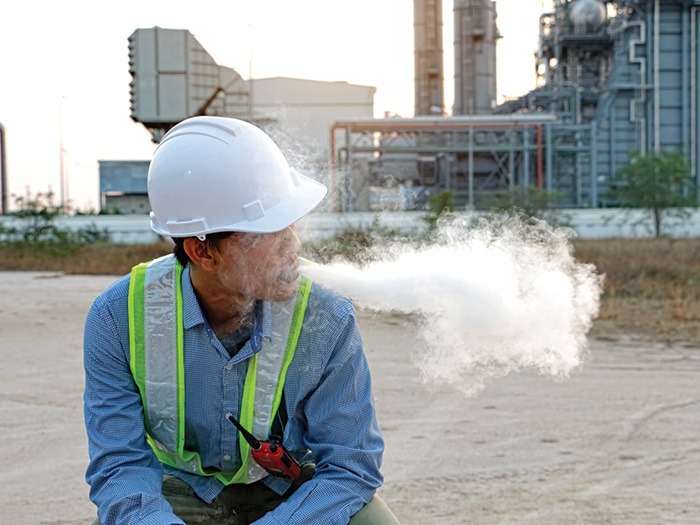The Cannabis Conundrum: How Federal Policy Hampers Workers’ Comp’s Reimbursement for Medical Use

Ask the regulating bodies of all 50 states and several territories of the United States about medical cannabis and you’re likely to receive as many answers about what should be done.
As jurisprudence piles up and regulatory bodies use different methods to govern reimbursement requests, adjusters, pharmacy benefit managers and injured workers are left confused. For experts in the space, all of this boils down to the lack of federal action on the issue.
“Part of the problem is that when you have this conflict between state and federal law, it’s hard to get clear policy; you’re trying to circumvent something that needs to be either enforced or fixed,” said Brian Allen, VP of government affairs at Mitchell’s Pharmacy Solutions division. “And if they’re not going to enforce it, they should just fix it. Every time there’s an administration change, you get a new attorney general at the U.S. level, and there’s a different interpretation.”
More Layers for Insurance
Allen noted many medical marijuana laws at the state level include exemptions for insurers and employers, but some states are now requiring medical cannabis reimbursement under special circumstances, most notably New York and New Mexico.
In New Mexico, cannabis has a dedicated fee schedule under its workers’ comp governing body, and injured workers can request reimbursement under appropriate medical necessity guidelines up to $4,930 per 90 days. In New York, the workers’ comp board developed a five-part test to determine reimbursement for cannabis.
“Anything that’s escalated is typically approved,” said Nikki Wilson, senior director of clinical pharmacy services and Allen’s colleague at Mitchell. “So the stance from New York is that they want this covered as a legitimate treatment.”
“New York is the only state that has a prior authorization process for medical cannabis,” Allen added. “And that’s why we don’t see a lot of these requests: By the time the payer knows about it, the injured worker has already purchased the marijuana and is then asking for reimbursement from the carrier. At that point, it’s almost a foregone conclusion — you don’t see too many denials after the fact.”
Anxious Patience
Aside from the outlier states with dedicated processes for cannabis reimbursement under workers’ comp, most workers’ comp professionals are taking a wait-and-see approach, even if it is an anxious wait.
Cannabis is still a federally banned Schedule 1 drug, the most-used illicit drug, and it’s not FDA-approved. Noting this, Tina Brletich, VP and head of managed care and clinical at AmTrust, explained that their stance is inline with those facts, and that they don’t view medical cannabis as a treatment like others they encounter in their pharmacy program, regardless of the acceptance of cannabis as a medical treatment by some states.
“There’s no standard pricing or NDC packaging, there’s no way to pay dispensaries directly and there’s no prescriptions. The workers’ comp industry hasn’t addressed the dosage equivalents and the fee schedule, and it’s not addressed comprehensively by regulating bodies either,” she said.
Because of this, AmTrust is tracking reimbursement requests, but they haven’t been flooding in, even in states taking a more accepting posture. “We are tracking it in New York and other states. It’s very infrequent — less than 0.01%,” Brletich said.
Pain Management Validity
Although workers’ comp curbed opioid prescriptions and their attendant risks at around the same time as the wave of cannabis legalization began, correlation is not causation, and workers’ comp pros cautioned against linking the two.
“I think the people who are promoting medical marijuana seized on that crisis as a marketing opportunity and said to policymakers, ‘You’re trying to reduce opioids — here’s an alternative for pain,’ ” said Allen. “If you look at the reasons that medical marijuana is being [recommended], it’s primarily for pain reduction.”
Allen’s colleague Wilson noted the best efficacy data for cannabis as a pain relief option is associated with chronic pain, nerve pain and cancer pain, rather than the types of acute injury pain associated with workers’ comp claims. “There’s really not enough from a clinical standpoint. We don’t have a good enough body of evidence to support it,” she said.
However, according to experts like Brletich, in addition to the federal status and what cannabis may or may not be effective at treating, it needs to be considered in the context of a typical worksite.
“Our goal remains the same: to ensure medically appropriate treatment and return-to-work,” Brletich said. “Cannabis on a jobsite does not support a safe environment, and it prevents return-to-work in many cases. We don’t want to mask [pain] with opioids or cannabis or other substances that cause impairment. If cannabis was recommended by a physician, it would follow the same evidence-based guidelines and clinical oversight as any other treatment.”
In order to meet those standards, cannabis would need to be fully federally rescheduled — an effort that lacks a clear pathway due to several factors.
“All signs point to rescheduling — the million-dollar question is ‘When?’ ” said Healthesystems’ Sandy Shtab, VP of industry and state affairs. “It’s squarely in the hands of the DEA and the FDA, which are in a chicken-and-egg situation. The DEA can only consider reclassification if it has evidence from the FDA that marijuana has an accepted medical use. Accepted medical use requires studies, and studies require funding.”
Shtab explained that the funding issue is arguably the crux of the dilemma for policymakers.
“Funding is sparse because marijuana is a Schedule 1 substance,” she said. “Still, the FDA continues to issue clinical research guidance on cannabis and cannabis-derived products, and has a committee that oversees enforcement on cannabis products which are being marketed, so it’s clear the FDA has their eyes on this. Cannabis is not going away, and customer demand seems greater now than it has ever been before.”
Acceptance Continues
Indeed, acceptance of cannabis for both medical and recreational purposes is higher than ever. According to a Pew Research Center survey, an overwhelming share of U.S. adults (89%) say either that marijuana should be legal for medical and recreational use by adults (59%) or that it should be legal for medical use only (30%). Just one in ten say marijuana use should not be legal. In this climate, more states are creeping toward full legalization in an effort to resolve policy within their own borders.
“This year, about a dozen states considered, or are considering, legalizing recreational marijuana through legislation and ballot measures,” said Laura Kersey, executive director, regulatory & legislative analysis at NCCI. “In addition, at least eight states considered legislation to legalize medical marijuana, with one state [Kentucky] legalizing medical marijuana so far this year.”
As of August 1, data indicates that those efforts bring the total number of states with legal medical cannabis to 38, and states where it’s legal for recreational use to 24. However, because of the varying exemptions designed to get the bills through state legislatures, these bills rarely settle the debate within the workers’ comp system.
“This year, most of the state legislative proposals to legalize medical marijuana contained provisions that reimbursement for marijuana in workers’ compensation is not required,” Kersey said. “However, a few states have pending legislation that would require workers’ compensation coverage or reimbursement for medical marijuana treatment under certain conditions.”
Regardless of where public opinion lands or how many states have cannabis on the docket, the workers’ comp industry is simply seeking clarity, and given the law of the land, that needs to come from a federal source. &











